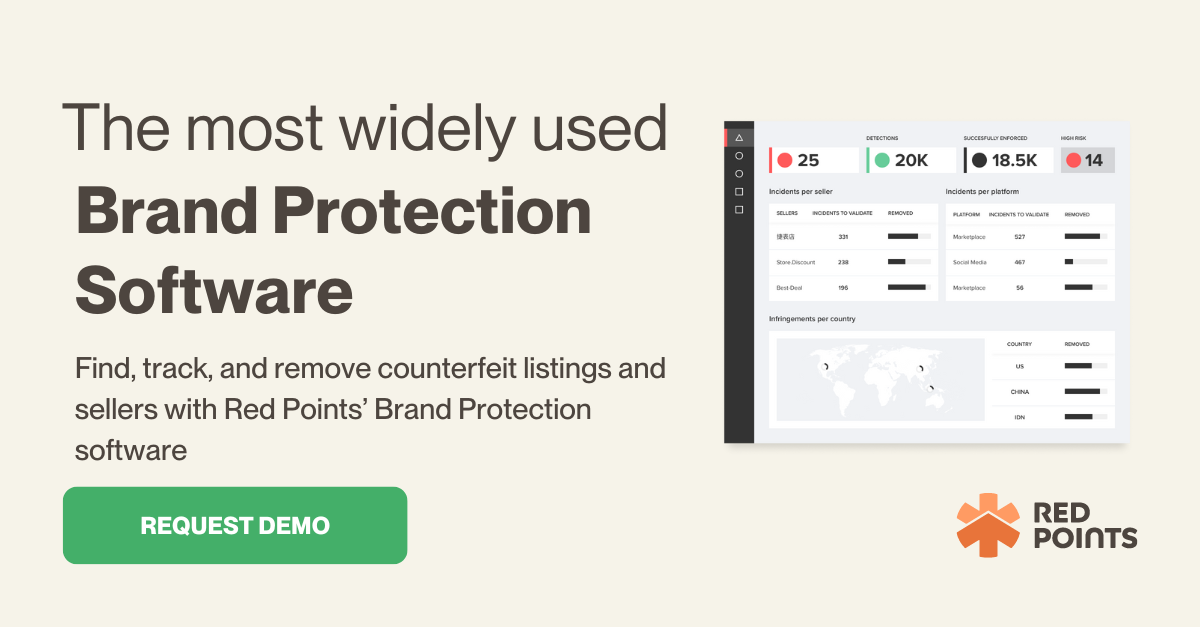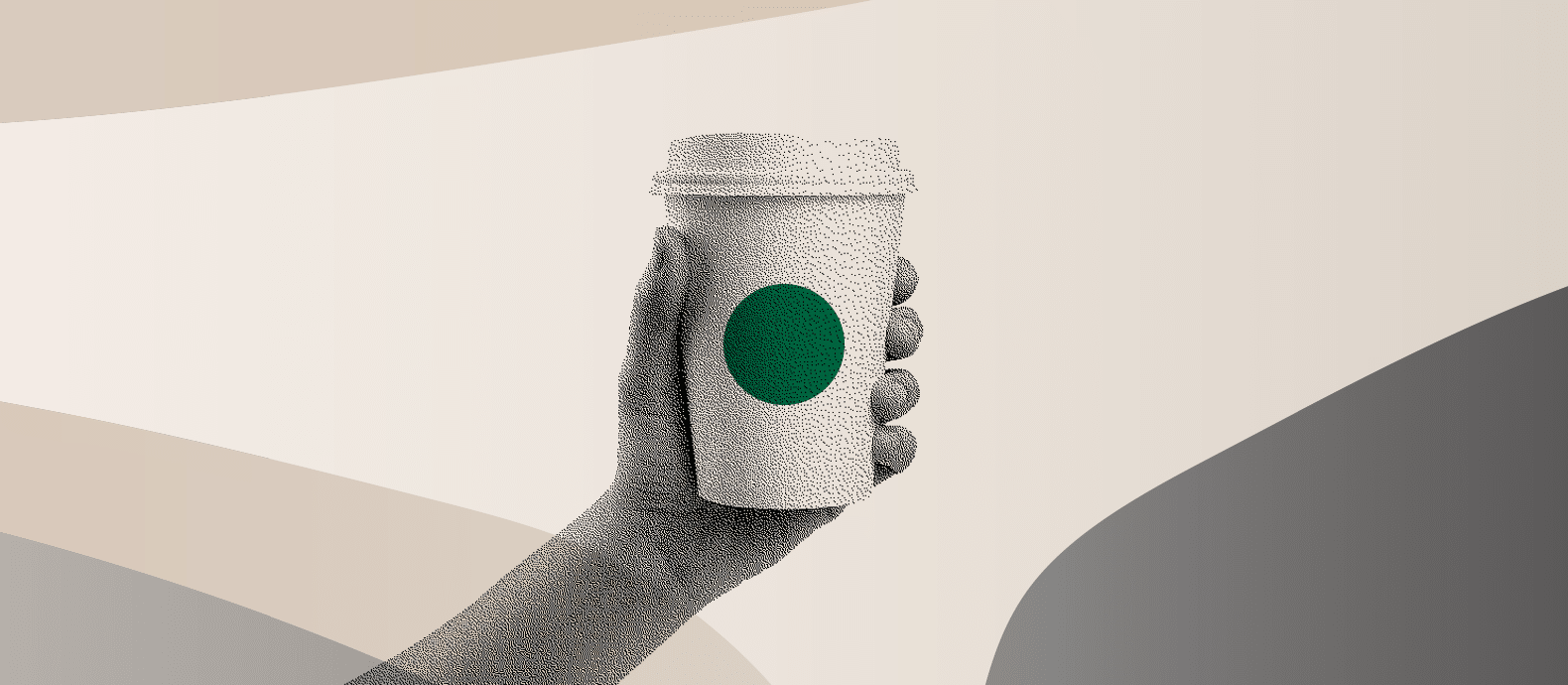For a brand, a logo can carry intangible value. It communicates what your brand stands for to your customers and distinguishes you from your competitors. That means knowing how to protect your logo design is an important part of your business strategy.
If a competitor were to come in and trademark a similar logo before you, they could sue you and you’d have to start building your brand image over from the beginning.
Summary
- Why you should trademark your business logo
- How to trademark a logo
- How to protect a business logo by enforcing your trademark
- Advantages of image recognition technology in brand protection
Should I trademark my business logo?
If you’re thinking about filing a trademark for your logo, you may have read that your business logo is already trademarked simply because you use it. That’s true. Under common law in the U.S., a trademark is protected simply for having been created and used by a business. However, protections only apply in local jurisdictions, and if someone registers a similar trademark, their mark will take precedence over yours.
We’d recommend trademarking your logo as soon as it’s finalized, even before you’ve brought your product to market. Your mark will be enforceable from when you begin a trademark application. To learn more about trademark law, check out this basic guide from the U.S. Patent and Trademark Office (USPTO). The EU Intellectual Property Office (EUIPO) also has helpful guides on European trademark law.
WHAT DOES A TRADEMARK PROTECT?
A trademark is designed to protect your brand’s identity in the marketplace. Think about it this way. If another brand came along and started selling soft drinks with the Coca-Cola logo, consumers would think the drinks came from Coca-Cola itself. Trademarks prevent this from happening by protecting the following elements of a logo:
- Shape
- Symbol
- Image
- Company name
- Slogans and taglines
WHAT DO YOU GAIN BY REGISTERING YOUR LOGO AS A TRADEMARK?
Only registered trademarks are protected under the Anticybersquatting Consumer Protection Act, which means you can sue an organization for registering a domain name that sounds like your brand but is spelled differently. For example, the name “AppelComputers” would infringe on Apple’s trademark.
A registered trademark comes with a few more perks:
- The U.S. Customs and Border Protection can confiscate suspected counterfeits automatically if your trademark is registered
- You can take litigation to federal courts
- You can protect your trademark in other countries
Registering your trademark simply gives you more power to enforce your rights when they are infringed upon.
DOES COPYRIGHT PROTECT A LOGO?
It’s also important to know how to copyright a brand logo, though copyright works a bit differently than trademark. A copyright protects the ownership of the work, in this case, the logo design. The copyright owner is the only one allowed to produce or modify that design.
You could copyright your logo if you or your company designed it and if it has a high enough level of creativity. If a designer created it for you, they will transfer the copyright to you. It’s helpful to have a copyrighted logo, but a trademark is more enforceable across different situations for logos.
How can I trademark my business logo?
Here’s what you need to do to trademark your logo (once you’ve already designed it):
- Do a trademark search in USPTO or EUIPO for similar trademarks to make sure yours doesn’t conflict with another registered mark. You can hire a trademark law firm to help ensure you won’t miss something and have to go back and change your trademark once you start the process.
- Complete a trademark application. You’ll have to upload a scan or image file of your trademark as well as describe all the parts of your mark and the industry you occupy.
- Wait and monitor for progress. Once you’ve submitted the application, it can take up to six months to hear back on a final decision.
The nice thing is that your trademark is protected once you submit the application. If something comes up and a brand accuses you of using a similar mark to theirs, the trademark office will consider your application date as the start of protection.
How can I protect my business logo and brand?
Considering how to protect your logo and brand, registering a trademark is only half of the battle. It’s up to you to monitor competitors and bad actors in the market who would seek to use your mark and confuse consumers. One of the best things you can do is employ logo recognition technology to scan the marketplace for possible infringements.
MONITOR YOUR TRADEMARKED LOGO’S USE BY LEVERAGING LOGO RECOGNITION TECH
Logo recognition technology uses algorithms to scan product listings and websites from across the net. The technology can spot brand logos in images even if the logo has been edited or cropped. Because of this, you don’t have to rely on a suspicious listing to contain your brand name in the text. It’s useful for flagging more potential infringements to check.
With Red Points’ trademark monitoring software, you can tap into large-scale detection and enforcement through artificial intelligence and machine learning. This means you can multiply your enforcement efforts and accurately identify infringements at scale, making the most of your trademark registration.
HOW LOGO RECOGNITION TECHNOLOGY WORKS
Red Points’ Logo Recognition feature lets you detect the presence of brand logos in images and videos. It works by scanning ecommerce marketplaces, social shopping pages, and regular websites.
After you upload images of your logo, the software will start scanning and automatically compare images and videos on those pages to your official logo. The result isn’t a binary “good or bad” rating but instead, a value of infringement probability based on logo similarity. You can then review the results and choose which listings to enforce against.
The great thing about this technology is that it can find partial and modified logos inside images. Your logo could be cropped, transformed, or slightly altered, and the system would be able to detect the lookalike.
BENEFITS AND BUSINESS IMPACT
Securing your logo is about more than just owning your design. It’s about securing revenue and making sure your potential customers don’t get confused by a copycat or knockoff. Here are some more benefits to using logo recognition technology:
- Adds another layer of detection ability beyond keyword search
- Can be added with Image Fingerprinting for enhanced detection
- Provides more ways for you to uncover brand abuse, counterfeits, and replica listings at scale
The end result of this technology is to help drive your business forward in multiple ways. By scanning thousands of listings, you can find if your logo has been used anywhere on the page, whether that’s in an image carousel or product video.
This lets you speed up your ROI since the technology reduces the time it takes to detect and then enforce on an infringement. Instead of relying on a costly analyst, you could use machine learning as your analyst and then review the results periodically. Plus, the system allows you to enforce against multiple listings at once, which is a good way to get control of your brand image quickly.
Conclusion
Your logo unifies your brand image across different kinds of products and content. People know who you are because of it. Don’t let others take advantage of that. Red Points’ brand protection solution allows you to identify online listings that use your design at scale so you can maintain your logo’s strength.
Logo recognition is an important tool in your arsenal of brand protection. It can be helpful whether you’re dealing with rogue sellers, counterfeiters, or replicas. Reach out to us for a quick demo to see how image recognition technology can help safeguard your brand.







